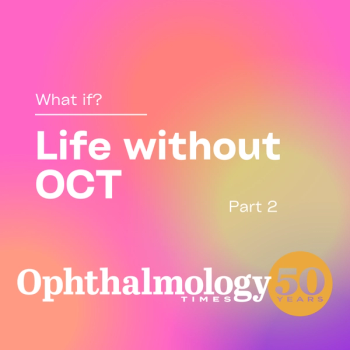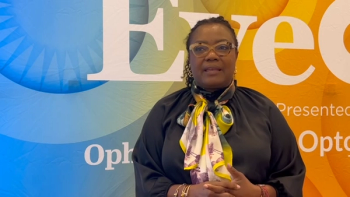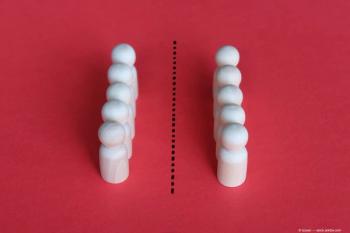
ASRS 2024: Adverum Biotechnologies presenting positive Ixo-vec clinical data from the 26-week interim analysis of the LUNA Phase 2 trial
6E10 combined with local prophylaxishas been selected for Phase 3 pivotal trials, with a favorable safety profile and potential best-in-class product profile at 26 weeks.
Adverum Biotechnologies, Inc announced results from the landmark 26-week interim analysis of the ongoing LUNA Phase 2 trial of Ixo-vec in patients with wet age-related macular degeneration (AMD).
The data were presented by Charles Wykoff, MD, PhD, during the 42nd annual meeting of the American Society of Retinal Specialists in Stockholm, Sweden.
Laurent Fischer, MD, president and CEO of Adverum Biotechnologies, highlighted the results in a news release, pointing out that in LUNA, the 26-week landmark analysis demonstrates that Ixo-vec has a potential best-in-class product profile, combining a favorable safety profile and a proportion of patients who are free of injections, supporting the company’s selection of the 6E10 dose with a local prophylactic regimen for Phase 3 pivotal studies.1
“Our pre-specified Patient Preference Survey, presented today for the first time, supports what we have long believed, that patients want to preserve long-term vision and be free of injections and are not deterred by corticosteroid prophylaxis,” Fischer said. “Over the next couple quarters, we plan to present data at important 9 month and 1 year timepoints. In OPTIC, nearly all patients who were injection free at 1 year continued to be injection free beyond 3 years.”
Star Seyedkazemi, PharmD, chief development officer of Adverum, explained the LUNA trial was designed to answer a key question – whether lower doses of Ixo-vec combined with enhanced prophylactic regimens could demonstrate a product profile consistent with or better than that demonstrated in OPTIC, adding the 6-month interim analysis has achieved this objective.
“Importantly, at the LUNA 26-week interim analysis, 100% of 6E10 patients have no or minimal inflammation, and no participants received corticosteroids for treatment of inflammation beyond the scheduled prophylaxis,” Seyedkazemi said. “And 76% of patients receiving 6E10 are injection free, with stable visual acuity and fluid control. In addition, in the 10 patients who were previously treated with the bi-specific therapy Vabysmo, all are free of injections, highlighting the ongoing unmet need even with recently approved anti-VEGF therapies.”
Moreover, Wykoff, director of Research, Retina Consultants of Texas, and professor of Clinical Ophthalmology at the Blanton Eye Institute, Houston Methodist Hospital, pointed out that recent data demonstrating that up to 42% of patients stop treatment for wet AMD after 3 years highlights that difficulty with adherence to a regimen of repeated frequent intravitreal injections results in less-than-optimal vision outcomes.
“This underscores a tremendous unmet need for longer-acting anti-VEGF therapies. As a principal investigator in all of the Ixo-vec gene therapy clinical studies over the last 5+ years, I believe the latest data further demonstrate that Ixo-vec has the potential to shift the treatment paradigm for patients with wet AMD,” he said.
Wycoff also noted that from the LUNA analysis and consistent with preclinical data, moving to the lower 6E10 dose resulted in less inflammation while maintaining clinical activity that would represent a significant reduction in treatment burden for many of his patients relative to the standard of care.
“Importantly, inflammation thus far appears to be clinically manageable and, when present, responsive to local corticosteroids that are well tolerated and routine to administer,” he added. “I believe Ixo-vec has the potential to deliver a promising product profile for patients, and I look forward to working with the Adverum team as Ixo-vec advances toward pivotal studies next year.”
About the LUNA trial
According to the company’s news release, the LUNA trial is an ongoing double-masked, randomized Phase 2 trial. 60 patients with wet AMD were enrolled equally across two dose cohorts, 6E10 or 2E11 vg/eye. The trial is designed to inform the selection of Ixo-vec dose(s) and corticosteroid prophylactic regimen(s) for Phase 3 registrational trials. In addition to assessing the 2 doses of Ixo-vec, LUNA is evaluating enhanced prophylactic regimens, with patients receiving 1 of 2 locally administered corticosteroid regimens, with or without oral prednisone.1
As of the February 14, 2024, data cut-off date for the interim analysis, 58 patients had completed the 26-week study visit, with 2 discontinuations related to adverse events unrelated to the study drug. The company noted in its news release the trial was designed to assess a broad wet AMD population, including patients requiring frequent anti-VEGF injections before enrolling in LUNA: at baseline, mean annualized prior anti-VEGF injections were 10.1 (2.6 SD), mean central subfield thickness was 350.6 (115.2 SD), and mean BCVA was 72.3 (7.7).1
At the interim analysis, 100% (n=20) of patients receiving the difluprednate-alone prophylactic regimen have completed their prophylaxis regimen, enabling evaluation of this regimen.
As previously reported in February 2024, the company implemented a protocol amendment to extend the Ozurdex-containing regimens with a course of difluprednate drops. As a result of this protocol amendment extending prophylaxis beyond the 26-week interim analysis landmark for some patients, 35.6% of patients in the Ozurdex + difluprednate prophylactic arm have not completed the scheduled regimen as of the 26-week interim analysis data cut-off date, limiting the company’s ability to fully evaluate this prophylactic arm at the interim analysis.1
According to the company, the LUNA trial builds on its experience with the OPTIC study, for which landmark 2-year data was published in The Lancet’s eclinicalmedicine and landmark 3-year data was presented at the American Academy of Ophthalmology 2023 Annual Meeting.
Upcoming milestones for the LUNA trial include a continued FDA and EMA formal and informal regulatory interactions in the second half of 2024; presentation of landmark LUNA 9-month analysis during Q4 of 2024; Phase 3 pivotal trial design update during Q4; presentation of landmark LUNA 52-week analysis in Q1 of 2025; and a planned initiation of the Phase 3 trial during the first half of 2025.
Reference:
Inc AB. Adverum Biotechnologies Presents Positive Ixo-vec Clinical Data from the 26-Week Interim Analysis of the LUNA Phase 2 Trial at the 2024 ASRS Annual Meeting. GlobeNewswire News Room. Published July 17, 2024. Accessed July 17, 2024. https://www.globenewswire.com/news-release/2024/07/17/2914283/0/en/Adverum-Biotechnologies-Presents-Positive-Ixo-vec-Clinical-Data-from-the-26-Week-Interim-Analysis-of-the-LUNA-Phase-2-Trial-at-the-2024-ASRS-Annual-Meeting.html
Newsletter
Don’t miss out—get Ophthalmology Times updates on the latest clinical advancements and expert interviews, straight to your inbox.


















































.png)


